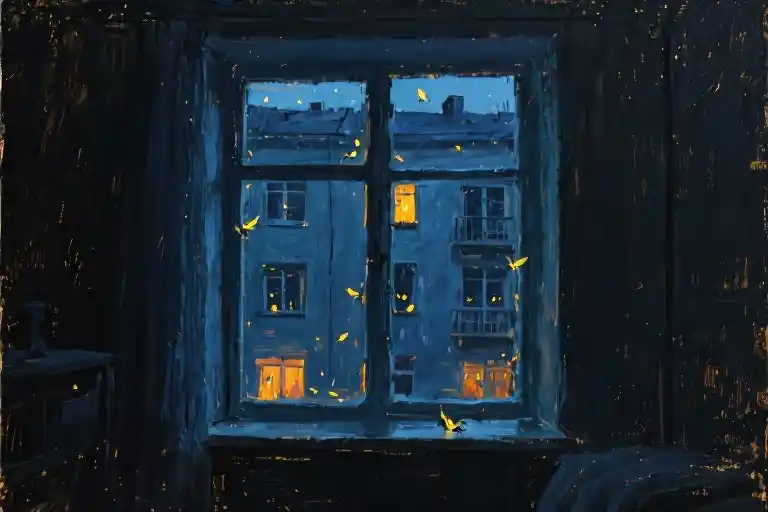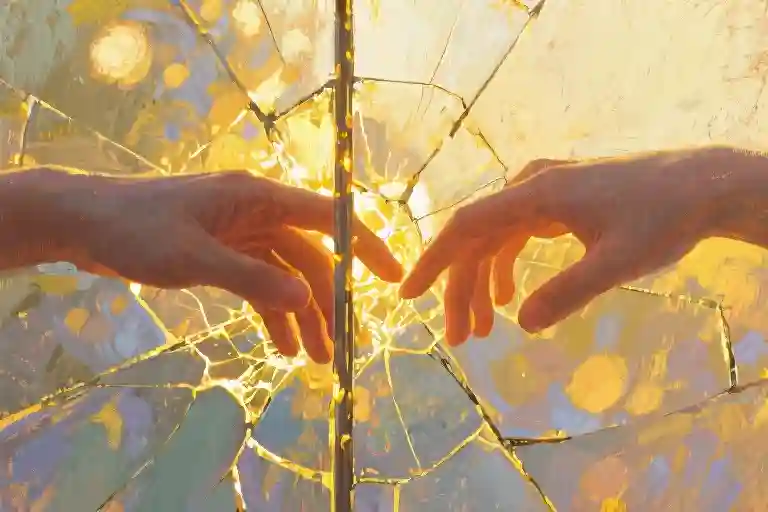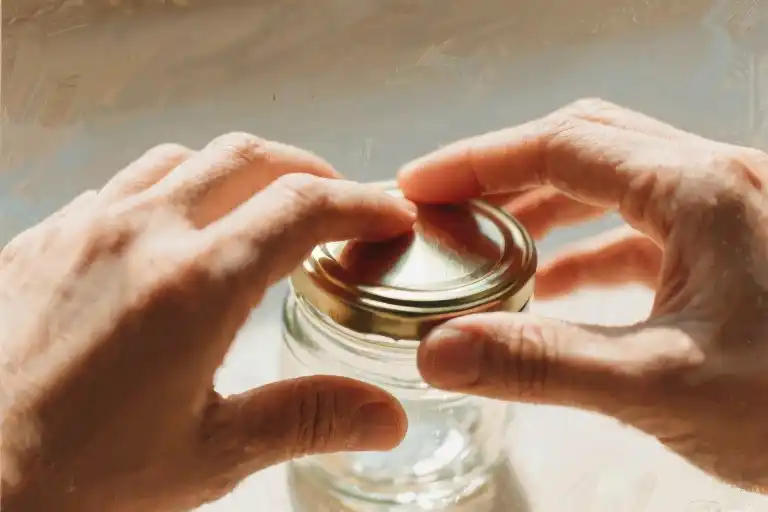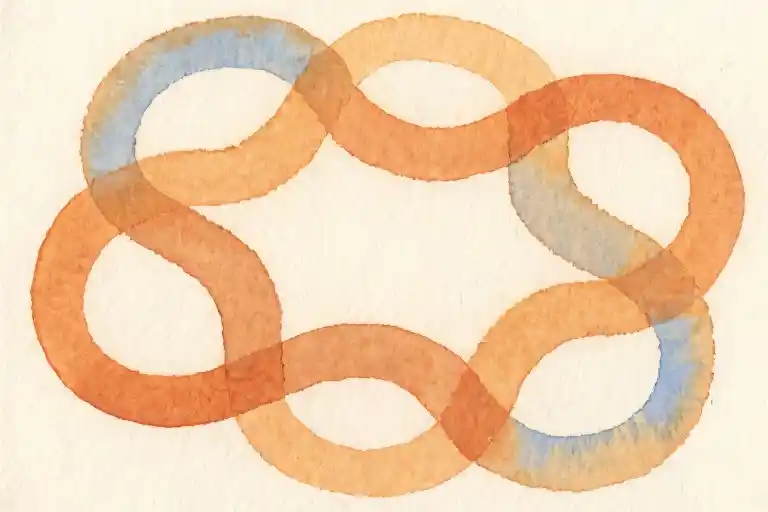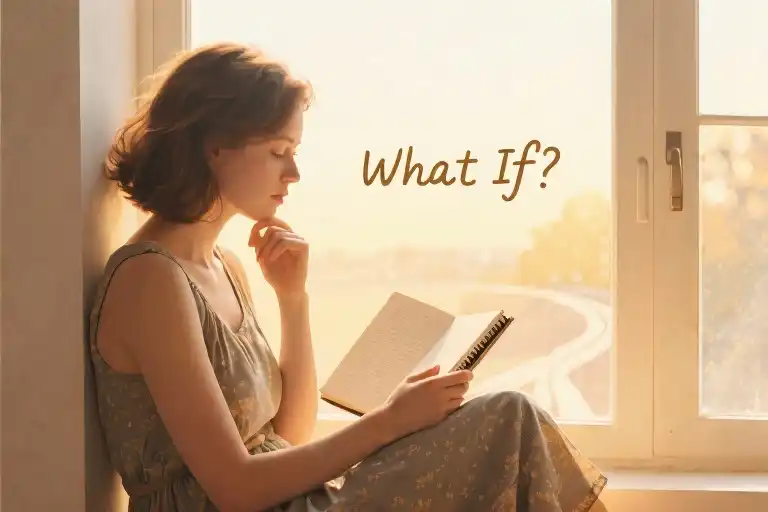I am an awkward person now.
Three years ago, you would’ve found me chatting with baristas about their latte art, remembering coworkers’ pet’s names, and being the first to suggest weekend brunches. Today? I cross the street to avoid saying hello to acquaintances. My phone shows 47 unread messages. The last voicemail from my best friend is from 62 days ago.
The pandemic didn’t just steal our gatherings—it magnified the cracks in my social confidence that heartbreak had already created. Like many in our generation, I’ve become fluent in the language of isolation:
- Mastering the art of staring at ceilings at 3AM
- Developing muscle memory for ignoring doorbell rings
- Perfecting the ‘I’m busy’ smile when neighbors wave
Then came the blackout.
On that humid July night when the power grid failed, my silent apartment became a sensory deprivation chamber. No refrigerator hum. No charging lights. Just the occasional drip from my kitchen faucet keeping time like a metronome. In that absolute darkness, I realized my social skills hadn’t disappeared—they’d atrophied from disuse, like unused muscles after a long hospital stay.
What shocks me most isn’t how I changed, but how quickly it happened. Consider these before-and-after snapshots:
- The Coffee Test: 2019 me would compliment three strangers’ outfits before getting my latte. 2022 me practices my order in the shower to avoid stuttering.
- The Elevator Metric: Formerly able to sustain small talk for 8 floors, now I pretend to check nonexistent texts at floor 2.
- The Birthday Paradox: My calendar used to be full of celebrations. Last month, I muted all birthday notifications.
This isn’t personality evolution—it’s trauma-induced social freezing. Like a computer stuck in safe mode, I’m operating at minimum functionality. The neuroscience explains it (our brains literally rewire after heartbreak), the pandemic enabled it (isolation became socially acceptable), but understanding doesn’t thaw the freeze.
Yet in that powerless night, I noticed something unexpected. Without screens to numb me or lights to hide in, I started humming—just absentmindedly at first, then deliberately. My voice sounded foreign after months of silence. That’s when I understood: social skills aren’t lights you turn on/off. They’re embers that need tending, however faint.
Maybe you’re reading this while ignoring a text notification. Perhaps you too have developed strategies to avoid human interaction. It’s okay. This isn’t a permanent state—it’s a protective cocoon. And like my accidental humming in the dark, tiny acts of reconnection still live in us, waiting for their moment.
The Museum of My Social Regression
Five years ago, my phone screenshots looked radically different. Where you’d now see grayscale graphs of 11-hour daily screen time (87% social media, 8% dating apps, 5% accidental camera openings), there used to be vibrant group photos from rooftop parties and brunch gatherings. The contrast between Then-Me and Now-Me could fill a diagnostic manual:
Exhibit A: Greeting Rituals
Then: Would hug acquaintances spontaneously, remembering their pet’s name from one mention
Now: Calculates optimal grocery store routes to avoid neighbors, has developed ‘sudden phone-checking’ evasion tactic
Exhibit B: Conversation Flow
Then: Natural segue from weather to travel stories to shared interests in under 3 minutes
Now: Rehearses ‘how about this rain?’ variations in shower, still blanks out when cashiers ask about weekend plans
Exhibit C: Digital Footprint
Then: 12+ unread notifications considered an emergency requiring immediate response
Now: 47 unanswered texts (3 months old), specializes in crafting plausible ‘Sorry just saw this!’ lies
Exhibit D: Alone Time
Then: Needed social recharge after 3 hours of people-ing
Now: Has memorized 37 ceiling cracks above bed, once spent 4 hours watching a spider rebuild its web
Exhibit E: Emotional Bandwidth
Then: Could listen to friends’ problems while planning dinner and noticing someone’s new haircut
Now: Gets exhausted imagining hypothetical small talk with mail carrier
Your Turn: Social Muscle Atrophy Checklist
Mark all that apply (no judgment – I checked 9/10):
☐ Your ‘unread messages’ count qualifies as an archaeological record
☐ You’ve perfected the ‘busy with phone’ walk to avoid interactions
☐ Making eye contact with baristas feels like an extreme sport
☐ Your most meaningful conversations are with Siri/Alexa
☐ You’ve convinced yourself ‘liking’ posts counts as socializing
☐ The thought of attending parties triggers phantom phone vibrations
☐ You analyze text replies for 20 minutes before sending ‘cool’
☐ Your social battery drains while reading this list
☐ You remember being good at people but it feels like a past life
☐ ‘How are you?’ now seems like an unreasonably complex question
The Data Doesn’t Lie
My phone’s weekly screen time report reads like a cry for help:
- Social apps: 38 hrs (equivalent to a full-time job minus lunch breaks)
- Photos taken: 6 (all of my cat’s left paw at weird angles)
- Steps averaged: 1,200 (bed to fridge to couch orbit pattern)
- Voice memos: 1 (4-second recording of me sighing then deleting)
This isn’t personality change – it’s what happens when heartbreak rewires your brain’s social circuits right as a pandemic removes all real-world practice. Like a tennis player recovering from shoulder surgery while the courts get demolished. The technical term is ‘double trauma social freezing’, and you might be experiencing it too.
The Science Behind Your Social Withdrawal
When heartbreak rewires your brain and isolation atrophies your social muscles, the change isn’t just in your imagination. Neuroscience shows how emotional trauma literally alters your ability to connect.
How Heartbreak Short-Circuits Your Social Brain
[Neuro Note] Your brain’s social reward system runs on dopamine – the same chemical activated when seeing a loved one’s smile. After heartbreak:
- The ventral tegmental area (VTA) becomes hyperactive, creating craving
- Prefrontal cortex activity decreases, impairing social decision-making
- Mirror neuron function diminishes, reducing empathy capacity
This explains why making small talk feels physically exhausting. Your neural pathways are literally rebuilding – like rehabbing a sprained ankle.
The ‘Use It or Lose It’ Phenomenon
Social skills behave like muscles:
| Before Isolation | After 6+ Months Alone |
|---|---|
| Natural eye contact | Unconscious gaze avoidance |
| Effortless banter | Overanalyzing every word |
| Reading social cues | Misinterpreting tones |
Prolonged solitude causes:
- Reduced oxytocin production (the ‘trust hormone’)
- Increased social threat vigilance
- Atrophied conversational reflexes
The Double Trauma Effect
When pandemic isolation collided with my heartbreak:
- Acute Phase (Weeks 1-4):
- Brain interpreted emotional pain as physical threat
- Social withdrawal became survival instinct
- Adaptation Phase (Months 2-6):
- Solitude changed from temporary to identity
- Developed ‘observer syndrome’ – watching social interactions like a foreign film
- Crystallization Phase (Month 7+):
- Social anxiety became default setting
- Created self-fulfilling prophecy of awkwardness
[Key Insight] Isolation didn’t cause my social decline – it gave my broken heart the perfect environment to rebuild wrong. Like a bone healing crookedly without a cast.
Your Brain’s Recovery Timeline
Neuroplasticity means you can rebuild. Typical milestones:
- Week 1-2: Basic pleasantries feel forced but possible
- Month 1: Can sustain 5-minute conversations without exhaustion
- Month 3: Natural laughter returns during interactions
- Month 6: Social confidence reaches 70% of pre-trauma levels
Remember: This isn’t about returning to your old self, but building a new social identity that honors your growth through pain.
The Observatory in Darkness
A Blackout Like No Other
The sudden power outage plunged my boarding house into absolute darkness—the kind that makes your pupils dilate wildly, searching for nonexistent light. With most tenants gone during lockdown, the building’s silence became a tangible presence. No humming refrigerator, no buzzing streetlights outside, just the occasional creak of old floorboards settling. My breath sounded unnaturally loud in the stillness.
Heightened Senses
Sensory amplification in darkness:
- Hearing: The drip-drip of a leaky faucet three rooms away became a metronome
- Touch: The texture of my sweater sleeves suddenly irritating against restless fingers
- Smell: Lingering coffee grounds in the kitchen smelling strangely medicinal
- Taste: Metallic fear at the back of my throat when the distant wail of an ambulance pierced the night
The Internal Monologue (Script Format)
(Stage lights up on a single chair in darkness. A spotlight reveals me sitting rigidly.)
ME: (whispering)
When did simple human connection become this terrifying?
(Picks up phone, screen illuminates face)
BRAIN:
That unread message from Sarah is 17 days old now. She probably thinks you’re dead.
ME:
Or that I’ve become one of those people who ghost…
(Phone light dies. Darkness returns.)
BRAIN:
Remember how you used to chat with baristas about their tattoos? Now you panic if they ask “How’s your day?”
ME:
(stroking cat absentmindedly)
The pandemic didn’t break me. It just showed how fragile I already was.
Environmental Symbolism
The recurring sounds took on meaning:
- Dripping faucet: Passing time measured in wasted opportunities
- Sporadic car alarms: Startled reactions to unexpected social interactions
- Wind through cracks: The sigh of atrophied social muscles
- Neighbor’s generator (briefly): Others adapting while I remained powerless
The Turning Point
At 2:17 AM, something shifted. The complete sensory deprivation became paradoxically clarifying. Without visual distractions, my thoughts arranged themselves with startling clarity:
- Heartbreak rewired my brain’s reward system – Socializing now felt like touching a hot stove
- Isolation accelerated the damage – Like a runner’s legs atrophying in a cast
- This wasn’t permanent – Neural pathways can rebuild, but need gradual exposure
(A single firefly appears at the window—first natural light in hours—then vanishes.)
The Realization
In that insect’s fleeting glow, I understood: social recovery would require the same patience as waiting for vision to adjust to darkness. The skills weren’t lost, just dormant. Tomorrow, I’d start small—maybe just replying to one text. Or smiling at my reflection. Something that wouldn’t trigger the panic of full conversation.
(Fade to black as distant power grid hums back to life.)
Rehab Camp: Small Steps Back to Social Connection
The Smile Practice (Difficulty: ★)
Start with something that requires no words – a simple smile. Studies show the act of smiling triggers neurobiological responses that can actually rewire your brain’s social circuits. Here’s how to begin:
- Mirror Work: Spend 30 seconds each morning smiling at your reflection. Notice how your facial muscles remember this familiar motion.
- Safe Recipients: Smile at service workers (baristas, cashiers) where interaction isn’t required but the gesture is appreciated.
- Smile Journal: Note daily reactions – did someone smile back? How did it make you feel?
“At first my smiles felt stiff, like unused hinges creaking open. But by week three, I caught myself naturally grinning at the mail carrier.”
Daily Sentence Recording (Difficulty: ★★)
Language muscles atrophy fastest. This exercise rebuilds your capacity for verbal expression without social pressure:
- Morning: Record one thought aloud (voice memo or mirror conversation)
- Evening: Write one complete sentence about your day
- Weekly: Combine 7 sentences into a micro-journal entry
Pro Tip: Use speech-to-text apps if speaking feels daunting. The goal isn’t eloquence – it’s reconnecting thought with expression.
Safety Zone Challenges (Difficulty: ★★★)
Gradually expand your comfort zone with these tiered activities:
| Level | Task | Success Metric |
|---|---|---|
| 1 | Reply to one text within 24hrs | Sent = Complete |
| 2 | Make brief eye contact during transactions | 2-3 seconds |
| 3 | Ask one follow-up question in conversations | “How about you?” counts |
Important: These aren’t pass/fail tests. Celebrating any attempt rewires your brain’s threat response to social situations.
The Relapse Clause
Social recovery isn’t linear. Some days you’ll retreat under blankets ignoring messages – and that’s valid. What matters is:
- Not mistaking a bad day for failure
- Recognizing small wins (“Today I waved at my neighbor”)
- Remembering progress compounds like interest
Your social muscles remember more than you think. Like riding a bicycle after years, the skills will feel awkward at first but the neural pathways are still there, just waiting to be reactivated.
“Recovery begins when we stop punishing ourselves for needing to recover.”
When the Lights Come Back On
The darkness lasted exactly 4 hours and 37 minutes. As the sudden glow of my bedside lamp startled me awake, I caught my own reflection in the window – puffy-eyed, hair tangled, but oddly alert. That powerless night became my unexpected therapist, holding space for truths I’d avoided in daylight.
An open question lingers in the charged air: Who will be the first person you greet when your emotional lights flicker back on? Not the grand reunion you imagine during lonely nights, but the actual moment when your mouth forms that first real “hello” to another human after so long. Will it be the barista who never judged your shaky hands? The neighbor whose name you’ve avoided learning? Or perhaps, like I discovered, it starts with saying good morning to your own reflection.
During those blackout hours, something miraculous happened. With all digital distractions silenced, I noticed the faint green pulse of fireflies outside my window – creatures carrying their own light through darkness. Their bioluminescence became my metaphor for rebuilding social skills step by step. You don’t need to flood the room with brightness immediately; sometimes one small glow is enough.
Your Turn to Share the Light
We’ve walked through this social skills rehabilitation journey together – from recognizing post-heartbreak awkwardness to understanding how pandemic isolation amplified our fears. Now I want to hear your story:
- What’s your personal “firefly moment” – that small but significant step toward reconnecting?
- Which social muscle atrophied most during your isolation? (Mine was remembering names)
- What harmless interaction unexpectedly gave you joy recently?
Leave your responses below or tag #SocialRecoveryStories – let’s create a constellation of these fragile-but-brave moments. Because the beautiful truth I learned? Loneliness makes us think we’re broken, but connection reminds us we were simply hibernating.
As you navigate your own emotional trauma and socializing challenges, remember: The lights will come back on. And when they do, you get to decide whether to squint, cover your eyes, or – when you’re ready – hold the door open for someone else still sitting in the dark.

